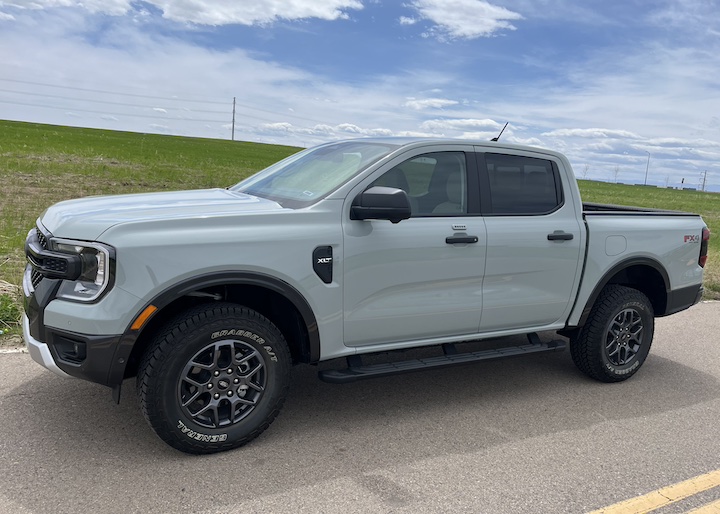 When it was first introduced in 2001, this crossover SUV was known as the Airtrek. The name was intended to produce a feeling of “footloose, adventure-filled motoring pleasure.”
When it was first introduced in 2001, this crossover SUV was known as the Airtrek. The name was intended to produce a feeling of “footloose, adventure-filled motoring pleasure.”
By 2006 a new name was introduced, the Outlander. This time we were told to expect a “feeling of journeying to distant, unexplored lands in search of adventure.”
That’s pretty cool, but what do I call it when I just want to drive down to the grocery store to get some eggs and maybe a glazed donut?
Marketing is fun!
For this review we’re going to focus only on the PHEV version, which stands for Plug-In Hybrid Electric Vehicle. This is different from a traditional hybrid in that you plug it in to generate just enough miles to get to a single destination. Then you plug it in again.
Don’t be alarmed; it also has a gas engine to pick up the slack.
The Basics
That gas engine is a 2.0-liter, 4-cylinder variety. Then you have twin 60kW electric motors, one for the front axle and one for the rear. Combine all three sources and you’ll get about 190 horsepow er.
er.
There are two trim levels offered, the SEL and the GT. The SEL itself has a pretty good stable of standard features, including heated side mirrors, keyless ignition, leather seats, rearview camera, and more.
The GT level adds a few extra toys, like LED headlights, a sunroof, and the always-cool multi-view camera. On one level those freak me out (how do they DO that?) but I’m getting spoiled to having them, too.
The Outlander seats 5, and has a pretty generous amount of storage for all your outdoorsy toys in the back.
The plug-in feature works like this: With a full charge you should be able to motor about 22 miles on electric power. Once that’s depleted the vehicle switches over to its gas engine. That switch is relatively seamless, and quite smooth.
There are other plug-in choices out there, and the Outlander’s electric range might give you pause. But for many, the 20+ miles are enough to scoot them around town.
The Interior
 By employing the plug-in hybrid technology, this version of the Outlander sacrifices the third row of seats you get in all-gas models. Personally, there’s no love lost between me and third-rows, so no worries there.
By employing the plug-in hybrid technology, this version of the Outlander sacrifices the third row of seats you get in all-gas models. Personally, there’s no love lost between me and third-rows, so no worries there.
You get a fairly spacious passenger area because of this. The second row isn’t huge, but has plenty of room for even tall passengers.
Storage space is decent up front, although I question the small center bin that loses some room to a center console that didn’t need to be that large. I think most of us would give up that space in order to have a larger bin.
The Outlander could stand to add a few extra spaces for our inevitable junk, too, like cell phones, etc.
The rear cargo area sports about 30 cubic feet, but lower the second row and that space expands to nearly 80 cubic feet. That’s fantastic.
 I wasn’t crazy about the materials inside this SUV. I know Mitsubishi is really playing the “affordable” card when battling competitors, but a slight upgrade here would go far.
I wasn’t crazy about the materials inside this SUV. I know Mitsubishi is really playing the “affordable” card when battling competitors, but a slight upgrade here would go far.
The Drive
Too many times I got the impression that the Outlander was running a half-marathon but had only trained for a 10k.
It often seemed to struggle during acceleration. Sure, lots of people will blame that on hybrid technology, but that’s not the case anymore. Once up to speed it felt fine, if perhaps a bit noisy.
The steering was also a bit iffy. I just wanted a better feel when I was making turns, especially on a twisty mountain road.
Braking, however, is quite good. And although I never took the Outlander off-road, its dual motors that individually control the axels helps. Plus, ground clearance makes this a good choice to leave the pavement behind.
The Tech
Audio and climate contr ols are easy and intuitive to operate, although I was underwhelmed by the Outlander’s sound.
ols are easy and intuitive to operate, although I was underwhelmed by the Outlander’s sound.
Good news for Apple CarPlay and Android Auto enthusiasts, because both are available here.
You get a couple of USB ports up front and another in the back. Plus – and this is always a nice feature – you get a standard home plug, too. Cars should have more of those.
Pretty much standard safety features are included, like blind spot warning and a rear-cross traffic alert system.
The plug-in system, which you’ll find on the right rear panel (the traditional gas fuel tank is accessed on the left), is super simple to operate. The charging cable is tucked under the rear cargo floor, and you’ll be plugged in and charging in about 30 seconds.
Both times I charged it I left it overnight. That easily gave me the 22 mile range I needed the next day.
The Bottom Line
The Outlander has a lot of potential to be a great city crossover/SUV. It just needs a bit more aesthetic love.
But if you’re in the market for a hybrid, this plug-in variety offers great standard features at a price that could keep you from the luxury market just a while longer.
2019 Mitsubishi Outlander PHEV GT
2.0-L, 4-cylinder gas engine
Two 60-kW electric motors
1-speed transmission
Twin-motor all-wheel control (AWC)
Fuel economy: 74mpg (Electricity and gas), 25mpg (Gas only)
MSRP: $41,495
As tested: $42,920
Reviewed by Dom Testa
Vehicle provided by manufacturer







